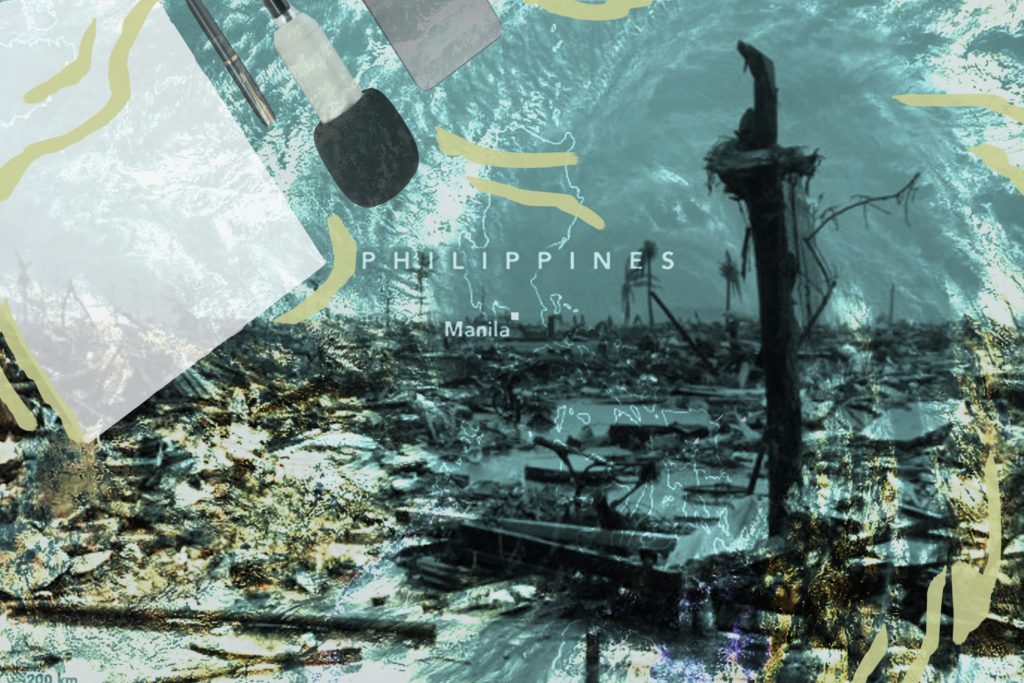Eleven years after Yolanda: Climate change call for news as platforms of action

SEVERE AND inclement weather in recent weeks highlighted the inadequacy of reporting typhoons as separate and unrelated episodes. Extraordinary climactic events were reported without reference to climate change and its impact on the Philippines and around the world.
Unfortunately, with journalists relying on official statements, most news reports lack substantive reference to this background. In this case, both the government and media seem oblivious to the fact that the Philippines has been ranked as the most disaster-prone country in the world, according to the World Risk Index.
On October 28, media reports recalled “Yolanda” the worst typhoon in history, and the devastation it wrought in Leyte and Samar eleven years ago. CMFR saw the limited focus of the coverage, with journalists citing what public officials had to say, reviewing the schedule of commemorative events, and collecting stories of survivors. Not one report checked on lessons learned, on the implementation of long-term strategies to ensure greater coastal resilience not just in Leyte and Samar, but nationwide.
The quote of President Ferdinand Marcos Jr.’s statement was the only note on lessons learned which reports cited without follow up. This year, some news organizations missed the milestone entirely. The media outlook does not indicate strong potential in the press to undertake policy discussions about climate change.
Reporters have not checked on whether reforestation of mangroves which was initiated after Yolanda has been adopted nationwide. Neither have journalists examined the effectivity of sea walls and coastal barriers that Leyte had built, or the basic implementation of hazard maps to guide further urban development.
Unfortunately, at this point, journalists have not even tracked how the 5,000 flood projects supposedly completed during the term of Marcos Jr. have worked or failed; or the proposed rehabilitation of pumping stations or the plans to address rising levels of rivers and waterways.
The weeks of inclement weather did not drive the media to examine recent climactic events, such as one year’s worth of rainfall in two hours in Valencia, Spain, or two months-worth of rain in 24 hours in Bicol. The unprecedented flooding in Bicol caused by “Kristine” and “Leon” in October and the simultaneous swirl of four typhoons toward the Philippines in mid-November were not discussed as patterns of “weird weather” related to climate change. The situation demands more from the media as their reports should serve as platforms of action relief and rehabilitation of affected communities.
The complexity of weather phenomena urges newsrooms to scale up their levels of knowledge, to contact more sources and references so they can report on long-term solutions that have worked around the world. News organizations need to fill up the obvious vacuum, the lack of journalists specializing on climate issues, along with government policies and action or the lack of the same. Unless milestone reportage evolves into platforms of action; these are reduced to rites of reportage.
There were efforts to move away from reliance on official quotes. The Philippine Star and ABS-CBN News Online noted the Philippines’ low disaster preparedness rating in a Harvard study, highlighting Filipinos’ lack of readiness despite living in a storm-susceptible country. The Star’s editorial pointed to the lack of emphasis on disaster-resilient infrastructure and the President’s admission that “more has to be done.” GMA News Online showcased improvements in PAGASA’s weather forecasting capabilities post-Yolanda. The Manila Bulletin reported on the continued use of temporary learning spaces in a Leyte school, underscoring slow recovery efforts.
If government response has stalled, media must move forward to initiate a national discussion of what can be done to prepare the country for the storms yet to come– with or without historic weather milestones.
Leave a Reply